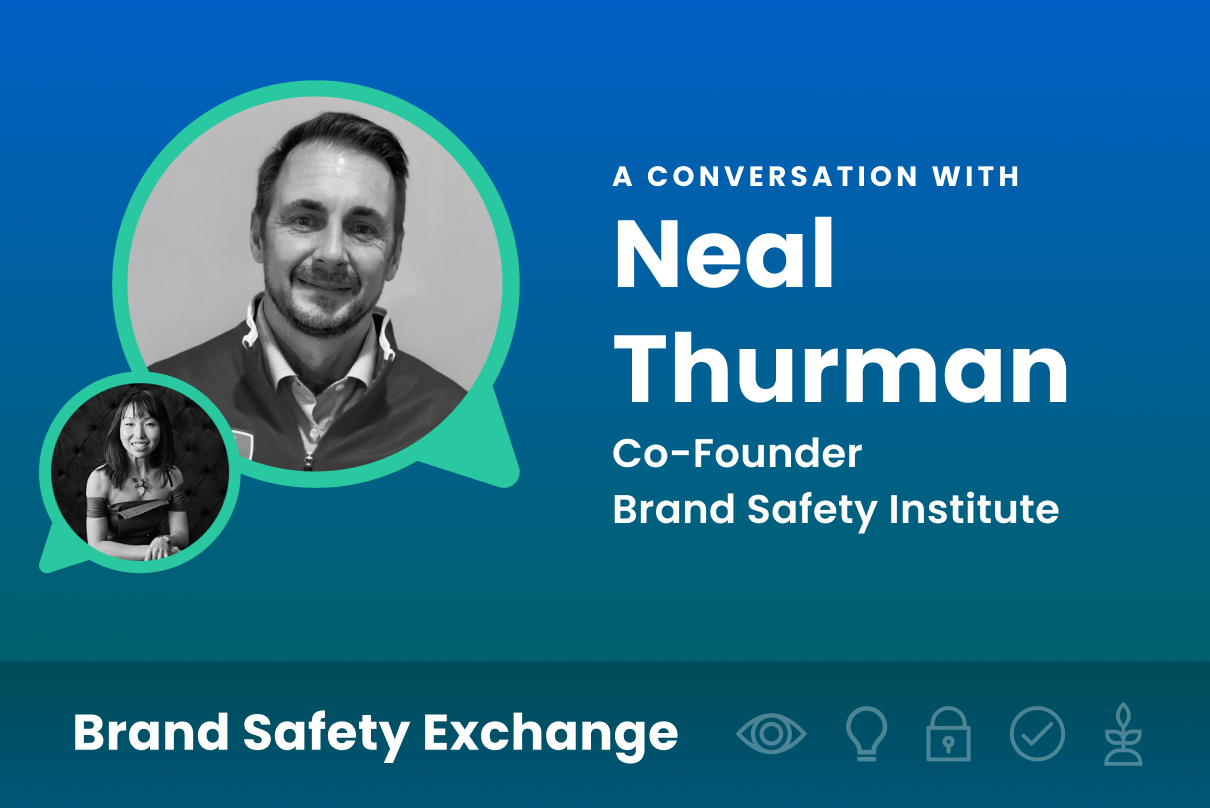Neil Thurman, Co-founder of the Brand Safety Institute (BSI) and advisor for Oasis Consortium, joined our host Tiffany Xingyu Wang to reflect on accountability, legacy and intentionality when it comes to the measures and procedures that corporations can take to ensure brand safety.
The Unintended Issues of Digital Advertising
The BSI was founded four years ago, at a time when the concept of brand safety was evolving at a very rapid pace, as a resource primarily focusing on helping professionalize the nascent figure of the Brand Safety Officer within companies.
As Neil highlighted, at the core, brand safety deals with a set of issues that are the unintended consequences of the rise of digital advertising. While the ultimate aim of digital marketing is always to place a particular message in the right place to meet the consumer interest, the escalation of the amount of content on the internet, the holes in the supply chain and the frailties of it, offered many opportunities for bad actors.
Over the years, the concept of brand safety has grown and the conversation around it became larger. It quickly changed to encompass more intellectually complex concepts, all very important matters to Oasis Consortium, like:
- misinformation
- corporate social responsibility
- digital buying user safety
Who Is Ultimately Accountable For Ensuring Brand Safety In A Company?
The issue of accountability for brand safety mostly depends on what are the dominant strains within a company. Yet, Neal assures, a lot of people could have that interest in an organization.
We could envision a scenario where the more notable aspects of a company’s brand safety practice, like viewability and prevention of fraud, are built from the C-suite and CFO side.
And this is part of what institutions like BSI and Oasis Consortium are doing: building a common approach so that different divisions of an organization contribute to brand safety and the notion becomes part of the brand identity. And it is only when a company starts thinking about brand safety as a financial aspect, that it can get better performances out of its investments in digital marketing.
The Legacy Of Big Platforms Like Google, Facebook and YouTube
According to Neal one of the amazing things that Google and Facebook and many of the other big platforms have done is they have really democratized the access to high-value advertising.
Facebook now has over 789m advertisers in its portfolio, mostly thanks to its automated tools, self-driven accounts, and huge audience. However, because there are so many brands advertising on it, there has to be an incredibly widespread discontent for it to be impactful on the platform in order to change its safety practices.
And, as about 90% of Facebook advertisers are SMB, even the big players cannot really make a difference, as companies like Gamble and Unilever tried to prove in recent months. This is the real challenge in the industry.
However, Facebook, Google and all those platforms that have the greatest market power have now decided to willingly come to the table. They want to better understand how we can all work together and evolve towards everybody’s business goal of brand safety, rather than making it a combative relationship. And this heralds a lot of optimism for the future.
Finding New Alternatives
As new platforms are being born, they are beginning to formalize their advertising approaches. On Roblox or TikTok, advertising is very nascent so these platforms are in the process of creating their own method for engaging with advertisers.
And, of course, by starting doing that now, when brand safety, inclusion by design and privacy are already part of the conversation, they have a huge advantage compared to the older platforms that have to consider new issues and figure out how to retrofit and evolve their product.
And this is a testament to the amazing work carried out by the Global Alliance for Responsible Media (GARM), a cross-industry initiative to address the challenge of harmful content on digital media platforms and its monetization via advertising.
At the same time, the complexity of the problem does not exempt the emerging platforms from working together with the major ones who already have an advertising legacy.
This means it is crucial to really start thinking about how digital marketing happens in your organization. And to do that, we need to look up and down the supply chain and build constructive relationships. If we think about it intentionally, have open communication about it, and set goals, brand safety will be more effective.
What the full interview below or listen and subscribe to the Brand Safety Exchange podcast on Apple Podcasts and Spotify.
Key Lessons To Amplify Your Brand’s Safety:
- Start to think intentionally about how digital marketing happens in your organization
- Build a common approach to the notion, so that different divisions of your organization can contribute and make brand safety part of the company's identity
- Look up and down the supply chain to build constructive relationships
- Work together with other stakeholders to evolve towards everybody’s business goals




